|
Delco-Remy in WWII
Delco-Remy WWII Aircraft Products
Delco-Remy WWII Marine
Equipment
Delco-Remy WWII Tank Products
Delco-Remy WWII Vehicle Products
Delco-Remy WWII King's Mill Plant
Delco-Remy WWII Antioch Foundry
Delco-Remy WWII
Stationary Engine Products
Delco-Remy WWII
Electrical Components for the Reo and Federal Truck, 20-Ton, 6x4
Delco-Remy
Training Manuals for Aircraft Components
Delco-Remy in World War Two
LST 393 and
Delco-Remy
This page added
1-14-2017.
One of most important but
overlooked and forgotten ships of World War Two was the Landing Ship,
Tank, or LST. They were not a glamorous ship or designed for
fighting. They were not very good looking and ungainly looking.
But they were so important to the success of the D-Day landings at
Normandy on June 6, 1944 that the Supreme Commander of Operation
Overlord, General Dwight D. Eisenhower, delayed the landings one month
so there would be more LST available. LSTs were cargo ships that
could land on a beach, open their bow doors allowing tanks and trucks to
move directly on to the beach. Due the fact there no ports
available to offload the huge amount of men and material needed to
sustain the D-Day operations, LSTs were extremely important to the
success of the landings.
LST 393 was one of 1,052
built during WWII and one of 233 that served at Normandy. LST 393
landed at Omaha Beach on June 7, 1944. This was the first of 30
trips she made to Omaha Beach delivering troops, vehicles and supplies.
On return trips to England she carried POWs and wounded soldiers.
On her first return trip from Normandy she took on 1,135 causalities.
During WWII LST delivered 9,000 American soldiers and 3,248 vehicles to
the combat beaches. She took on 5,000 prisoners of war and 10,000
wounded American soldiers. She traveled 51,817 miles and landed on
foreign shores 75 times. During all of these trips Delco-Remy
cranking motors started her twin Electo-Motive Diesel Engines. One
starter may have been with her for the entire war and since then.
See below for details.
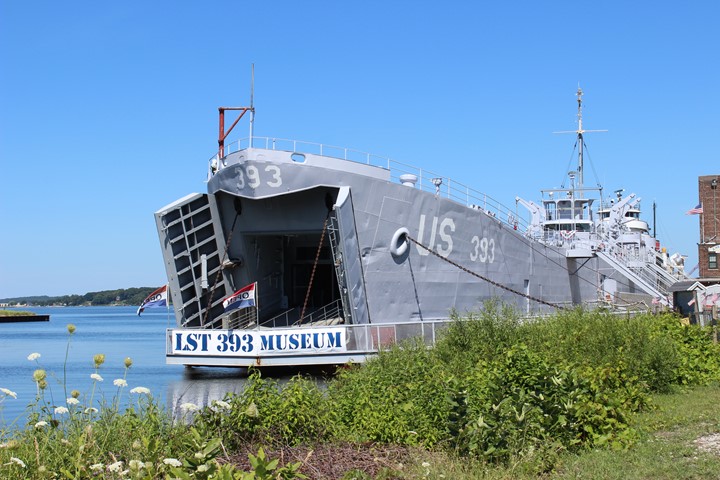
Upon beaching itself, the LST 393 could land
its cargo of tanks, halftrack, armored cars, trucks, jeeps and troops
directly to the landing beach No port was needed to get heavy
equipment and supplies to the landing location during the early stages
of an invasion. Once the beaches were secured by the infantry in
the initial landings, LSTs would be the next priority to arrive at the
beachhead. Author's photo.
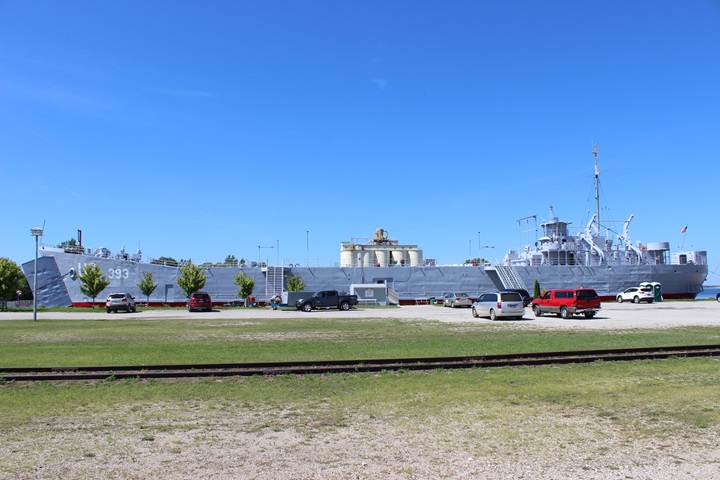
LST 393 along the bay at Muskegon, MI.
Author's photo.
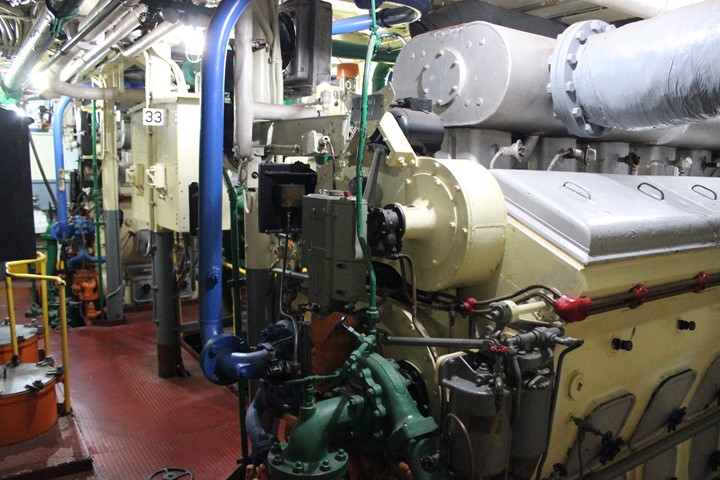
There are only two LSTs on display in the
United States. LST 325 in Evansville, IN is an operating ship and
consequently the engine room is not available for tours. Because
LST 393 is not an operating ship, its engine room is. This allows
visitors to see her twin Electo-Motive Model 12-567 900 hp diesel engines.
Looking in the door to the engine room, the first engine can be seen
from the doorway and the second one is back by the second blue pipe.
Author's photo.
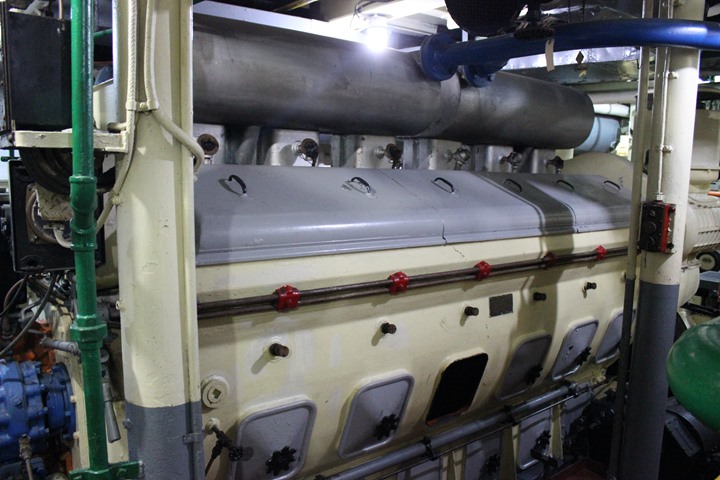
This is the second engine on the far
side of the engine room. Author's photo.
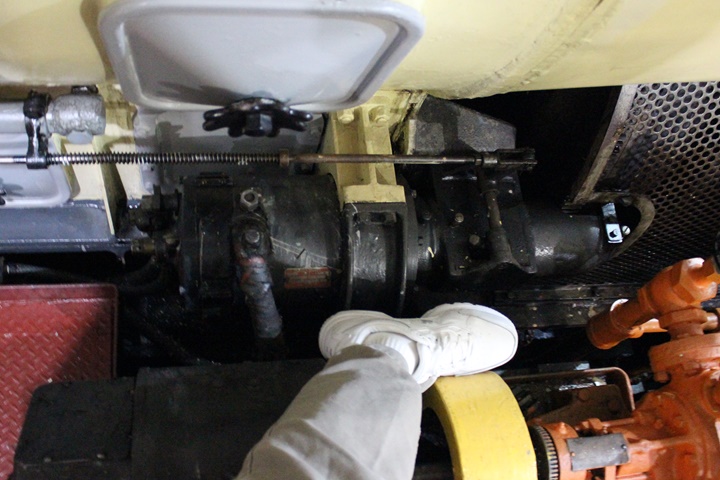
Now this is a Delco-Remy cranking motor!!!
Note the size of the motor compared to the author's size 9-1/2 shoe.
It took this size of a craning motor so start the Electro-Motive 900 hp
diesel engine. This is the largest DR cranking motor the author
has ever seen. Author's photo.
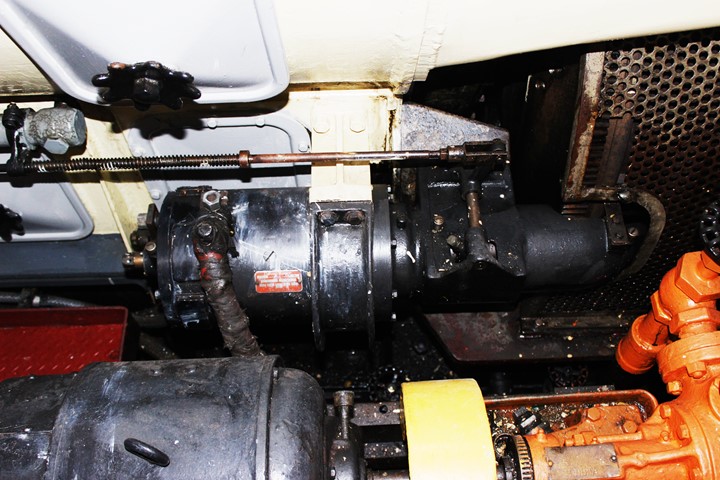
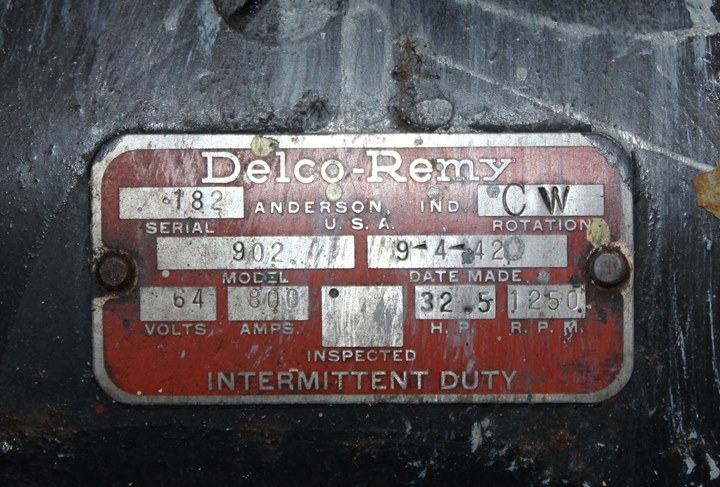
The Delco-Remy ID Tag shows this was Serial
Number 182 and was built on September 4, 1942. This 64 volt
starter pulled 800 amps to produce 32.5 hp. LST 393 was
launched on November 11, 1942 and the EMD engine was built on October
20, 1942. Could it be this Delco-Remy heavy duty starter is the
one originally installed on the engine and in LST 393? If so, DR
Serial Number 182 was at Omaha Beach at Normandy 30 times. Thirty
times it would have started the starboard side engine when it came off
the beach. Author's photo.
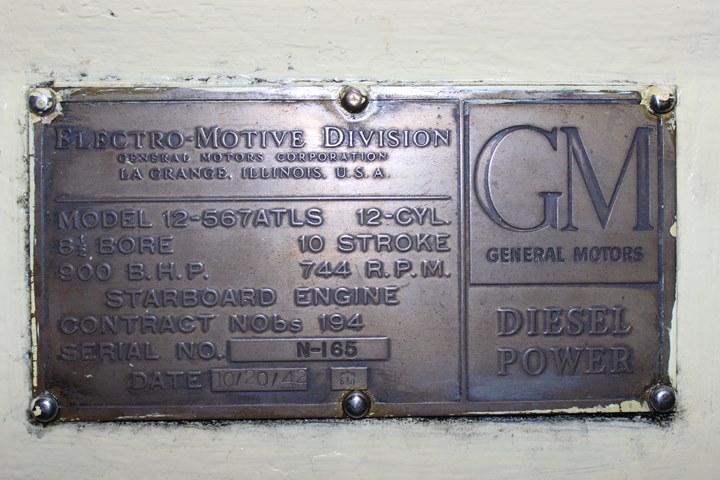
Author's photo.
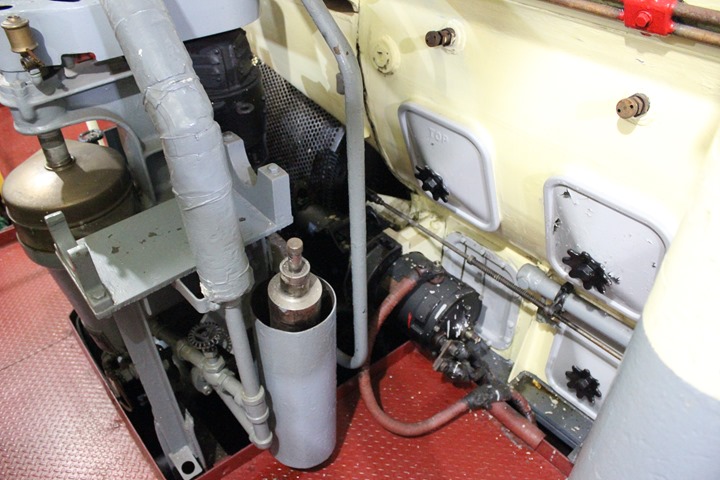
This is the starter on the port side engine
and the one nearest the entry way. Note the size of the electrical
cable. Author's photo.
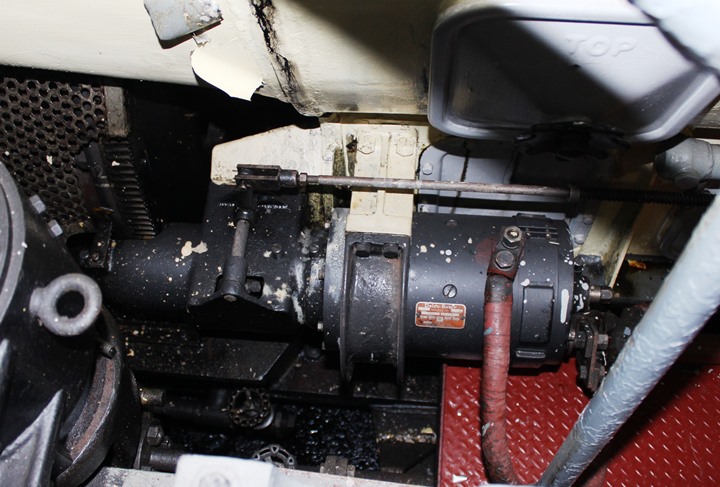
Author's photo.
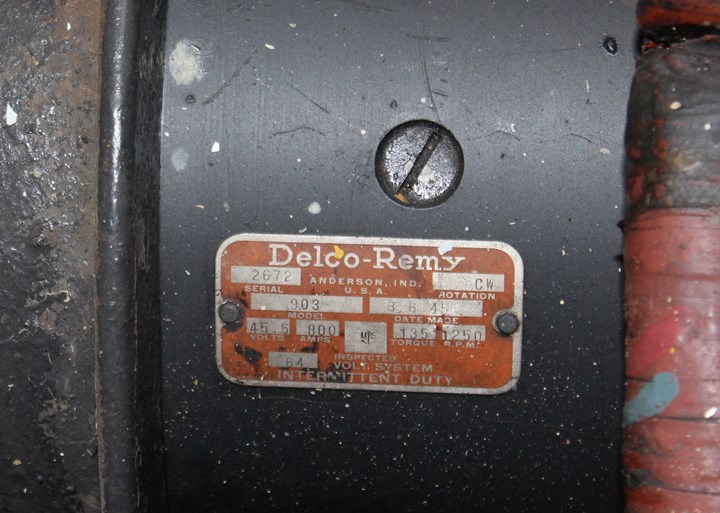
Author's photo.
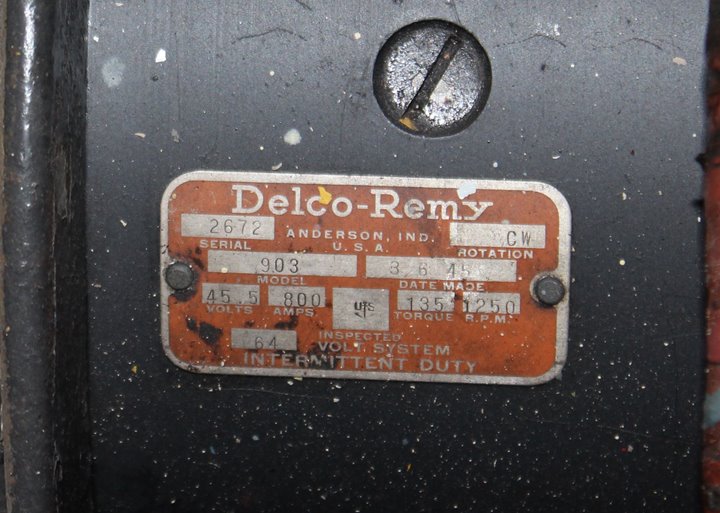
This is a model a Model 903 as it is for the port engine and mounts on
the opposite side of the engine as the previous starter.
Both have CW rotations. This cranking motor is a replacement as it
was built on March 6, 1945. It is Serial Number 2672.
Author's photo.
During WWII 1,052 LSTs were built. Half
of them had the EMD diesel engines as shown above. With two
engines per installation Delco-Remy supplied at least 1,052 starters for
the ships. It is unknown whether DR starters were used on the non
EMD engines.
|











